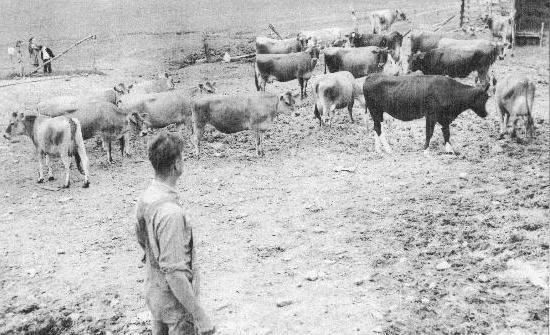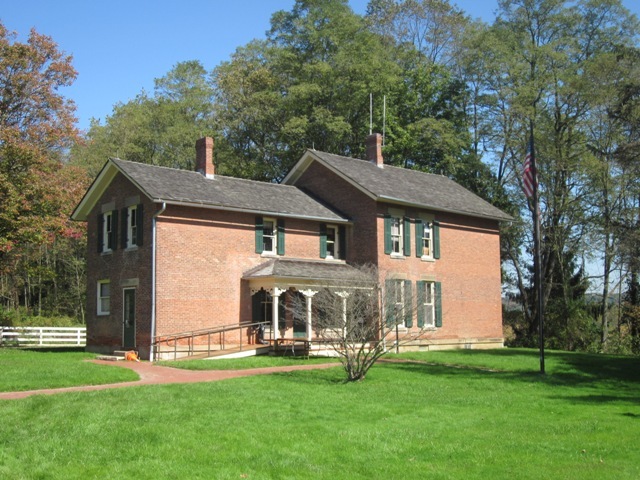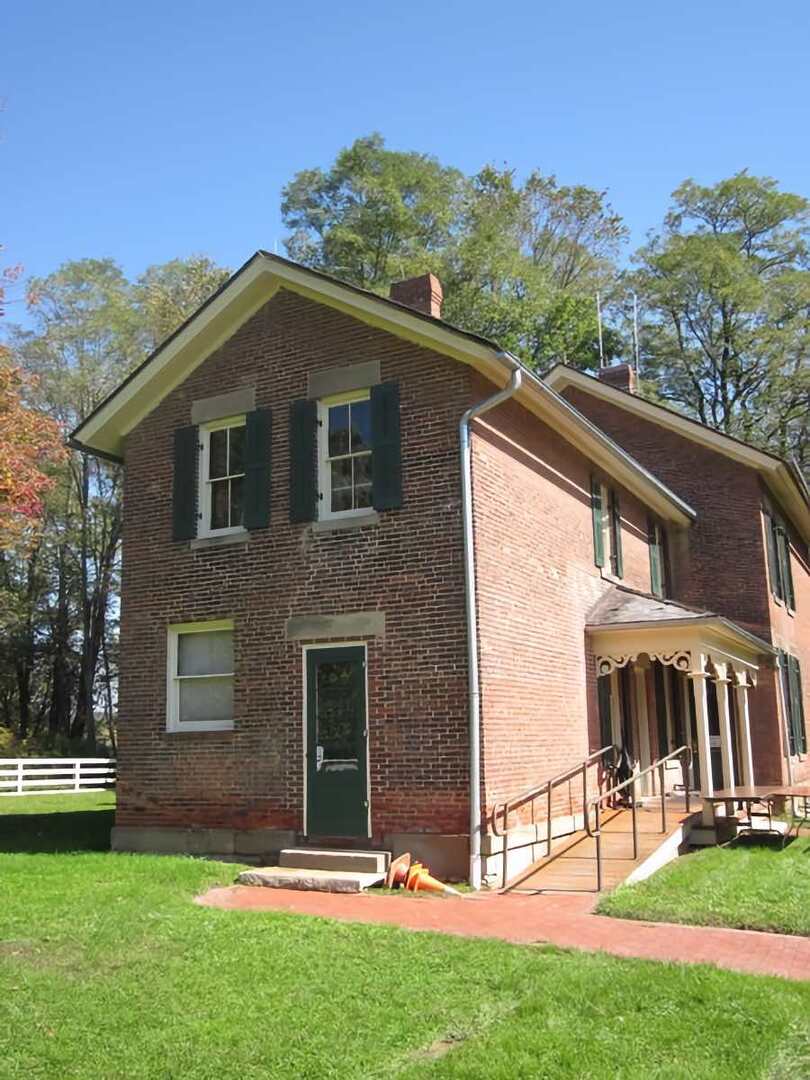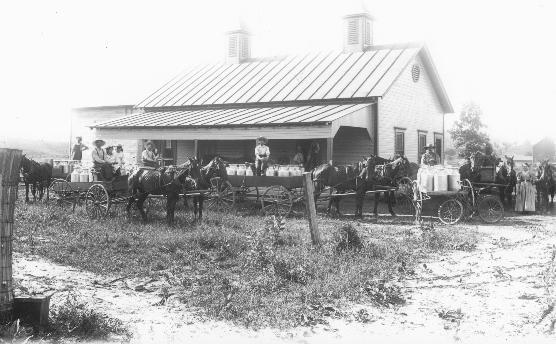
Both historic and modern farmers in the Cuyahoga Valley faced significant daily choices about what to grow or raise on their properties each year. Early nineteenth-century farmers had few livestock, and mostly for personal and family consumption. Innovations in transportation, including the Ohio & Erie Canal and later railroads in the mid-nineteenth century connected farmers to the city and made it worthwhile to start raising larger numbers of dairy cattle. Cheese factories in Akron and Cleveland, which purchased unprocessed milk from dairy farmers, emerged along the canal routes, causing the value of milk produced in the valley to almost triple between 1870 and 1910. With these new sources of income, dairy farmers invested more money in specialized grains, better barns, and breeds of cattle known for higher milk yields. Dairy farming became so important to nineteenth-century valley life that the Western Reserve became known regionally as "Cheesedom."
In the 1870s, Jonas Coonrad (1836-1919), built a cheese factory on his 300 acre farm in Brecksville. Coonrad moved to Cleveland in 1866 and, despite his lack of farming experience, decided to purchase a farm in the southeast corner of Brecksville Township to begin his own cheese-making business. Coonrad obtained milk from his own 500 cows, as well as from other farmers in the surrounding communities. The profitable business also allowed the Coonrad family to build a large brick farmhouse in 1875. According to its National Register of Historic Places nomination, the Coonrad farmhouse represents "one of the finest late-nineteenth-century residences in the Cuyahoga Valley."
Jonas Coonrad competed with other valley cheese factories, including the Oak Hill Factory in Peninsula, which produced over 70,000 pounds of cheese per year. Allen Welton built the Oak Hill Factory in the 1860s, as well as a second cheese factory at Hammond's Corners in Bath Township. The Cuyahoga Valley also included the Tilden Cheese Factory on Richfield Road, and Sumner Creamery on Medina and Granger Roads. Sumner Creamery, the only business to survive into the twenty-first century, now operates out of Akron.
Near the end of the nineteenth century, new and faster forms of transportation forced valley cheese factories to compete with larger businesses in Cleveland and Akron. Jonas Coonrad closed his factory in 1879 after the completion of the Valley Railroad created competition between his company and cheese distributors in Cleveland. Despite the failure of his cheese factory, Coonrad's elaborate farmhouse, now the Coonrad Ranger Station, still stands overlooking what remains of the Ohio & Erie Canal.
Audio
Images




